The Galaxy Fold has been the most polarizing product I can recall having reviewed. Everyone who saw it wanted to play with the long-promised smartphone paradigm shift. The results, on the other hand, were far more mixed.
If nothing else, the Fold has a remarkably high Q-Rating. Each person who saw me using the product had at least a vague idea of what it was all about. I honestly can’t remember the last time I’ve had that reaction with a non-iPhone device. That’s great from brand perspective. It means a lot of people are curious and potentially open to the notion that the Samsung Galaxy Fold is the future.
Of course, it also means there are a lot of people looking on if you fail.
In some ways, this past week with the Samsung Galaxy Fold has been an extremely public beta. A handful of samples were given out to reviewers. Most worked fine (mine included), but at least three failed. It’s what we in the industry call a “PR nightmare.” Or at least it would be for most companies.
Samsung’s weathered larger storms — most notably with the Galaxy Note 7 a few years back. Of course, that device made it much further along, ultimately resulting in two large-scale recalls. The nature of the two issues was also vastly different. A malfunctioning screen doesn’t put the user at bodily risk like an exploding battery. The optics on these things don’t get much worse than having your smartphone banned from planes.
As of this writing, the Fold is still set to go on sale, most likely this year. To be perfectly frank, the April 26 release date seemed overly optimistic well before the first reports of malfunctioning units. It’s never a great sign when a device is announced in February and is only made available for review a few weeks ahead of launch. It’s kind of like when a studio doesn’t let reviewers watch a film before release. It doesn’t necessarily mean it’s bad, but it’s something to keep an eye on.
That’s the thing. The Galaxy Fold is the kind of device you want badly to succeed. You want it to be great and you want Samsung to sell a billion because it’s a genuinely exciting product after a decade of phones that look mostly the same. There’s also the fact that Samsung has essentially been hyping this thing for eight years, since it debuted a flexible display at CES 2011.
In spite of that, however, the home stretch feels rushed. Samsung no doubt saw the writing on the wall, as companies like Huawei readied their own foldable. And while Royole beat the fold to market, Samsung still had a very good shot at the claim of first commercially viable foldable on the market, with a decade of Galaxy devices under its belt and hand-in-hand work with the Google team to create an Android UX that makes sense on a pair of very different screens.
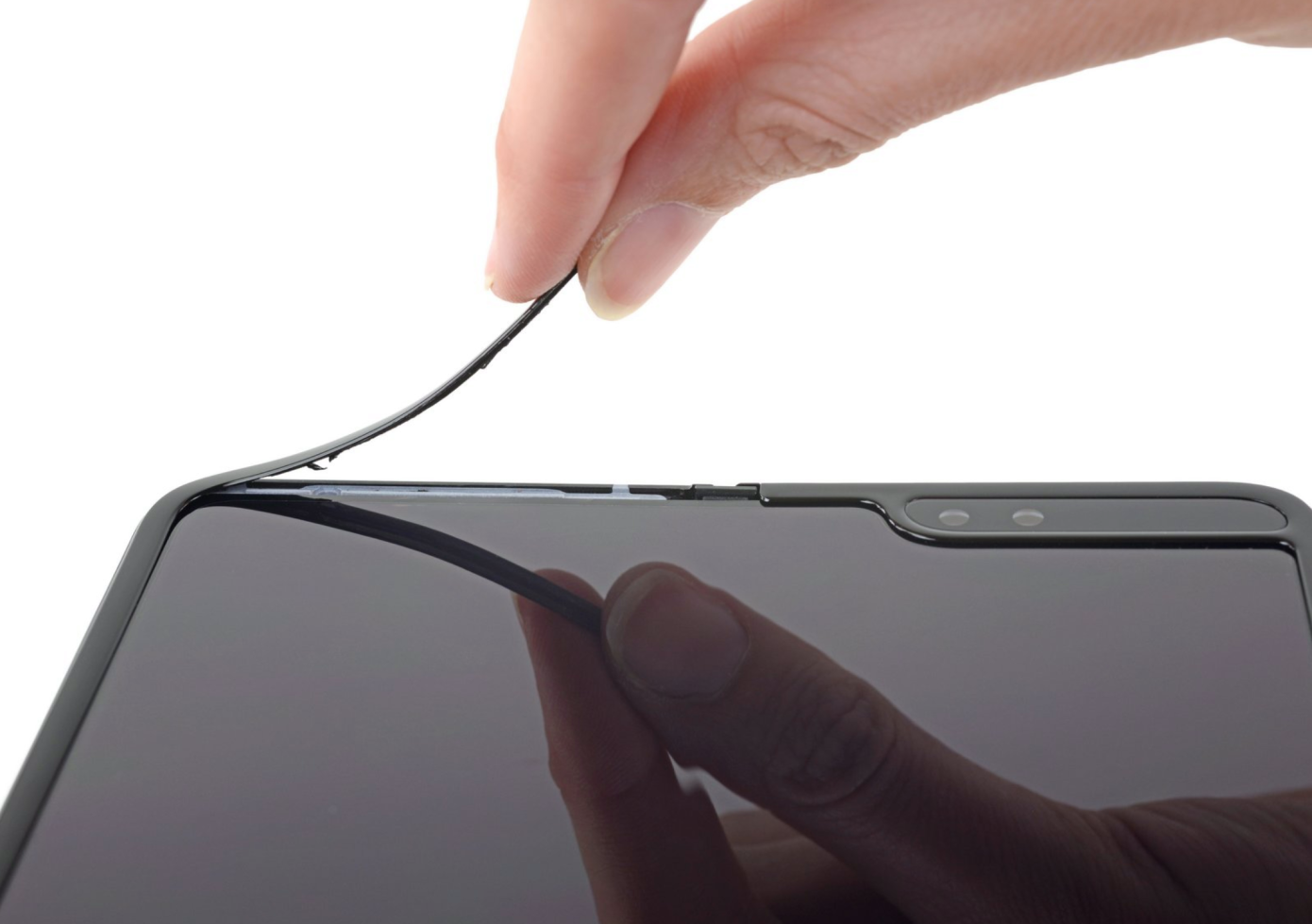
[Source: iFixit]
But this iFixit teardown speaks volumes. “Alarmingly” isn’t the kind of word you want/expect to hear about a company like Samsung, but there it is, followed directly by “fragile” — itself repeated five times over the course of the write-up. iFixit’s findings match up pretty closely with Samsung’s own reports:
- A fragile display means knocking it the wrong way can result in disaster.
- A gap in the hinges allows dirt and other particles to wedge themselves between the folding mechanism and screen.
- Don’t peel off the protective layer. I know it looks like you should, but this is probably the easiest way to wreck your $2,000 phone that doesn’t involve a firearm or blender.
What makes all of this doubly unfortunate is that Samsung has about as much experience as anyone making a rugged phone that works. I feel confident that the company will do just that in future generations, but unless the company can come back with definitive evidence that it’s overhauled the product ahead of launch, this is a difficult product to recommend.
Samsung knew the first-gen Galaxy Fold would be a hard sell, of course. The company was pretty transparent about the fact that the experimental form factor, coupled with the $1,980 price tag, meant the device will only appeal to a small segment of early adopters.
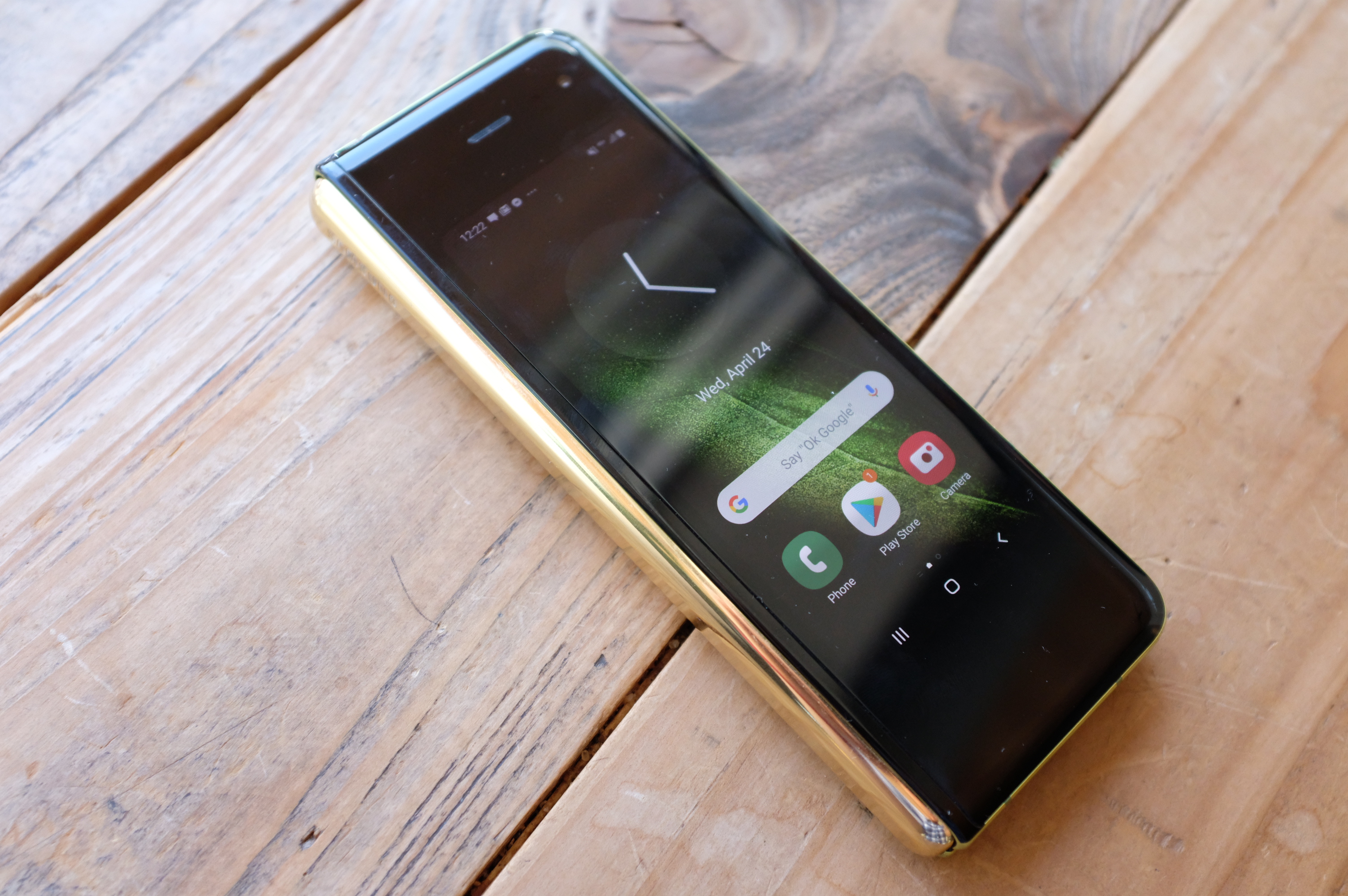
Even so, the company managed to sell out of preorders — though it didn’t say how large that initial run was. Nor are we sure how many users have canceled in the wake of this past week’s events. Certainly no one would blame them for doing so at this point.
But while the apocalyptic shit-posters among us will declare the death of the foldable before it was ever truly born, whatever doesn’t kill Samsung has only made it stronger. And this misfire could ultimately do that for both the company and the category, courtesy of its informal beta testing.
Rewind a mere week or so ago (seriously, it’s only been that long), when we finally got our hands on the Galaxy Fold. I was impressed. And I certainly wasn’t alone. Admittedly, there’s a bit of a glow that first time you see a device that’s seemingly been teased forever. The fact that it exists feels like a kind of victory in and of itself. But the Fold does an admirable job marrying Samsung’s hardware expertise with a new form factor. And more importantly, it’s real and works as advertised — well, mostly, at least.
The truth is, I’ve mostly enjoyed my time with the Galaxy Fold. And indeed, it’s been fun chronicling it on a (nearly) daily basis. There are some things the form factor is great for — like looking at Google Maps or propping it up to watch YouTube videos on the elliptical machine at the gym. There are others when the bulky form factor left me wanting to go back to my regular old smartphone — but those trade-offs are to be expected.
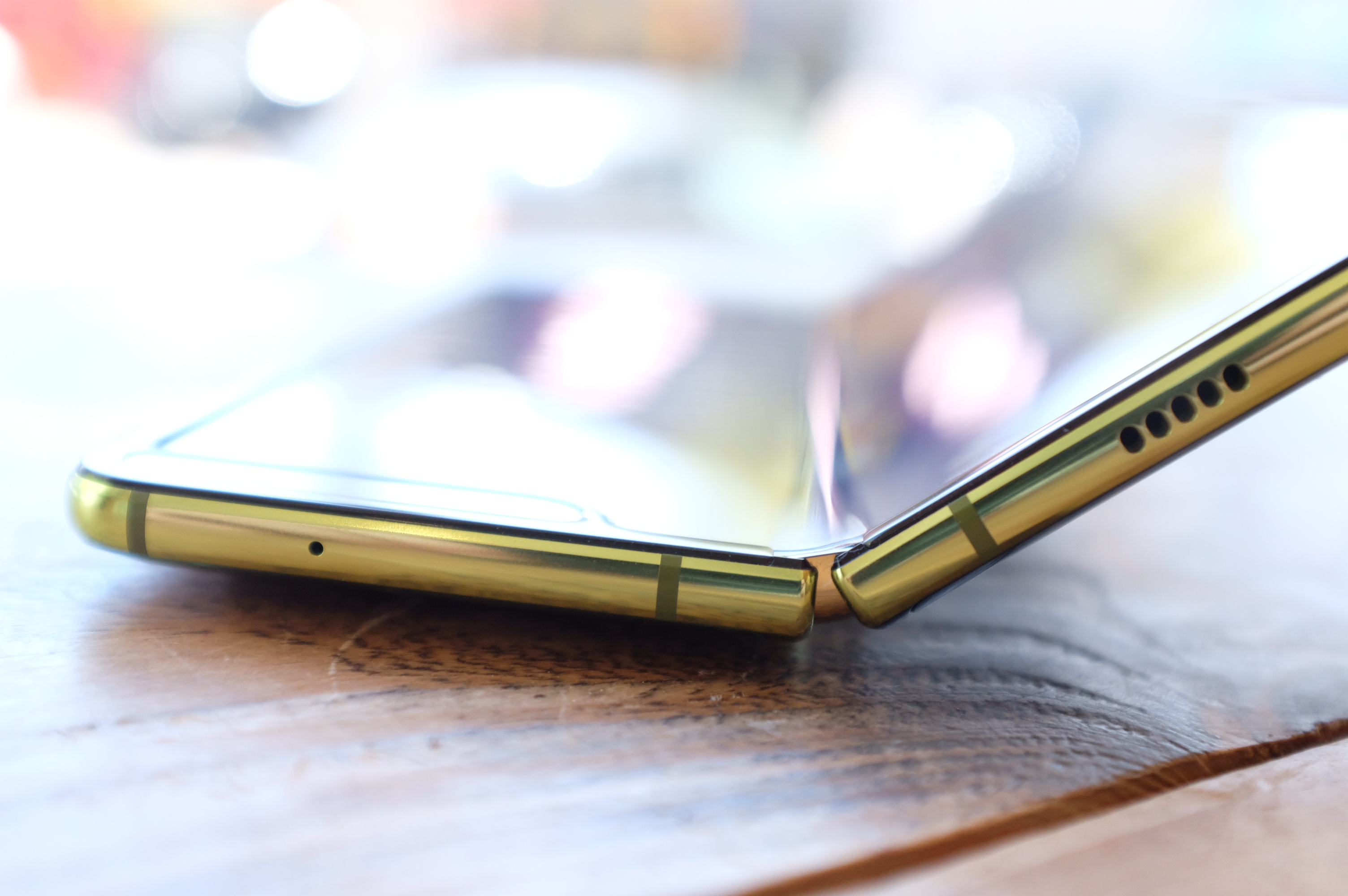
I both like the Fold’s design and understand the criticism. Samsung’s done a good job maintaining the Galaxy line’s iconic design language. The foldable looks right at home alongside the S and Note. That said, the rounded backing adds some bulk to the product. And while open, the device is thinner than an iPhone, when folded, it’s more than double the thickness, owing to a gap between the displays. It’s quite skinny in this mode, however, so it should slip nicely into all but the tightest pants pockets.
In practice, the folding mechanism might be the most impressive part of the product. The inside features several interlocking gears that allow the product to open and shut with ease and let users interact with the device at various states of unfold. I found myself using the device with it open at a 90-degree angle quite a bit, resting in my hand like an open book. The Fold features a pair of magnets on its edges, which let you close it with a satisfying snap. It’s weirdly therapeutic.
Really, the biggest strike against the device from a purely aesthetic standpoint is that it’s not the Mate X. Announced by Huawei a few days after the Fold’s big unveil, the device takes a decidedly more minimalist approach to the category. It’s an elegant design that features less device and more screen, and, honestly, the kind of thing I don’t think most of us expected until at least the second-generation product.
The gulf between the two devices is especially apparent when it comes to the front screen. The front of the screen is around two-fifths bezel, leaving room for a 4.6-inch display with an awkward aspect ratio. The Mate X, meanwhile, features a 6.6-inch front-facing AND 6.4-inch rear-facing display (not to mention the larger eight-inch internal display to the Fold’s 7.3).
There’s reason to recommend the Fold over the Mate X, as well. I can’t speak to the difference in user experience, having only briefly interacted with the Huawei, but the price point is a biggie. The Mate X starts at an even more absurd $2,600, thanks in part to the fact that it will only be available in a 5G version, adding another layer of niche.
That price, mind you, is converted from euros, because 1) The product was announced at MWC in Barcelona and 2) U.S. availability is likely to be a nonstarter again, as the company continues to struggle with U.S. regulators.
Of course, the Fold’s U.S. availability is also in limbo at the moment, albeit for very different reasons.
I ultimately spent little time interacting with the front screen. It’s good for checking notifications and the like, but attempting to type on that skinny screen is close to impossible, with shades of the new Palm device, which implements its own shortcuts to get around those shortcomings. The inside, meanwhile, takes a butterfly keyboard approach, so you can type with both thumbs while holding it open like a book.
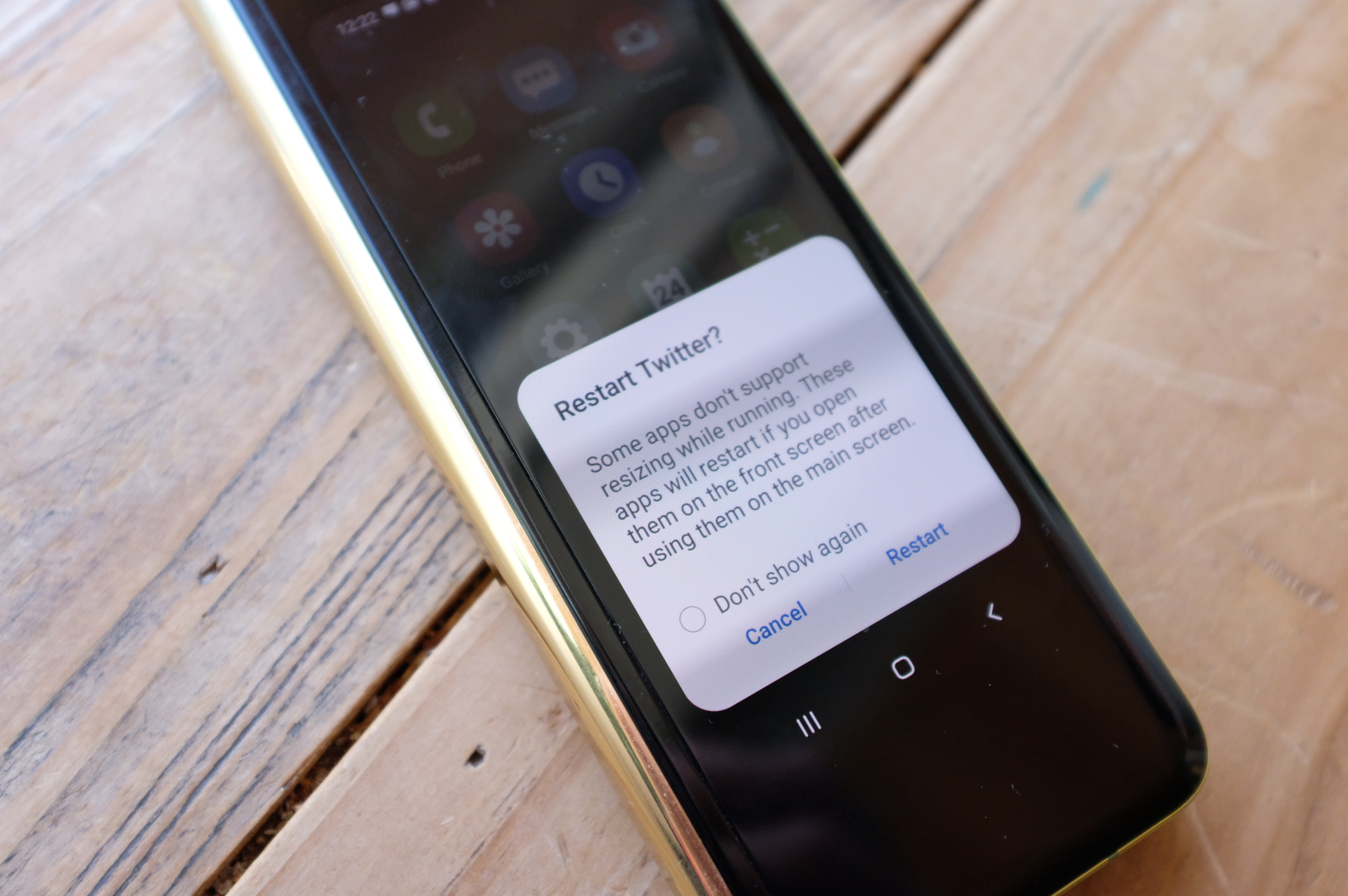
There’s also the issue of app optimization. A lot of this can be chalked up to an early version of a first-gen device. But as with every new device, the equation of how much developer time to invest is largely dependent on product adoption. If the Fold and future Fold’s aren’t a success, developers are going to be far less inclined to invest the hours.
This is most painfully obvious when it comes to App Continuity, one of the device’s primary selling points from a software perspective. When working as advertised, it makes a compelling case for the dual screens. Open something on the front and expand your canvas by unfolding the device. Google is among the companies that worked directly with Samsung to optimize apps this way, and it’s particularly handy with Maps. I used it a fair amount on my trip last week to Berkeley (shout out to the fine people at Pegasus Books on Shattuck).
When an app isn’t optimized, Samsung compels you to restart it, or else you get a nasty case of letterbox bars that retain the aspect ratio of the front screen. Continuity isn’t designed to work the other way, either — opening something on the large screen and then transferring to the front. That’s a bit trickier, as shutting the phone is designed to offer a kind of finality to that session, like hitting the power button to put the device to sleep.
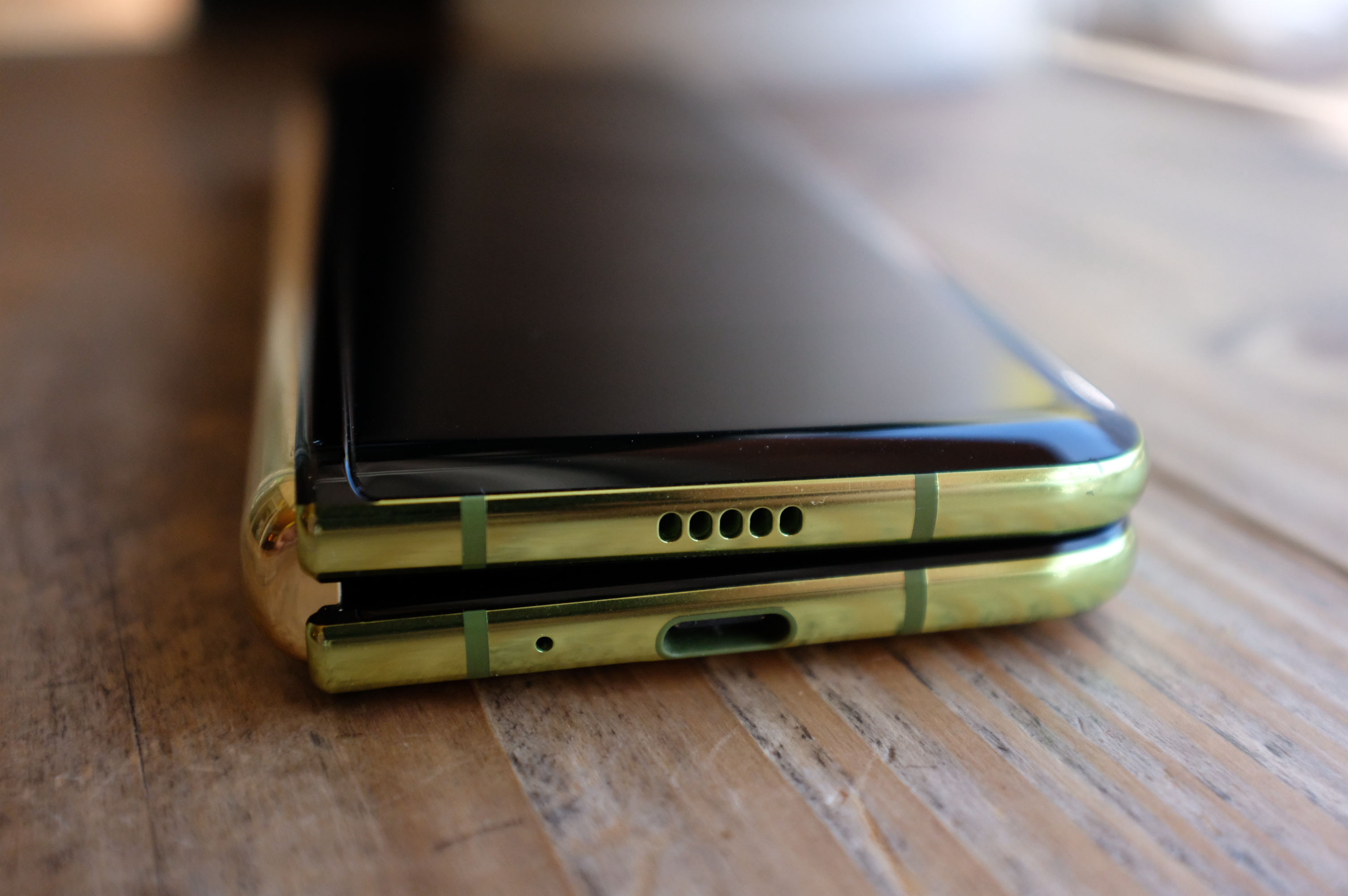
I get that, and like many other pieces here, it will be interesting to see how people utilize it. Aside from the obvious hardware concerns, much of the work on the second-generation device will center around learnings from how users interact with this model. I know I surprised myself when I ended up using the 7.3-inch screen to snap photos. It felt silly — like those people who bring iPads to photograph events. But it’s ultimately a much better viewfinder than that measly 4.6-incher.
That’s really just the tip of the iceberg for the inside screen, of course. The size, which is somewhere between phablet and mini tablet, provides ample real estate that can still be held in one hand. It’s a great size for short videos. I’ve watched a lot of YouTube on this thing, though the speakers (a small series of holes on the upper and lower edges) leave a lot to be desired.
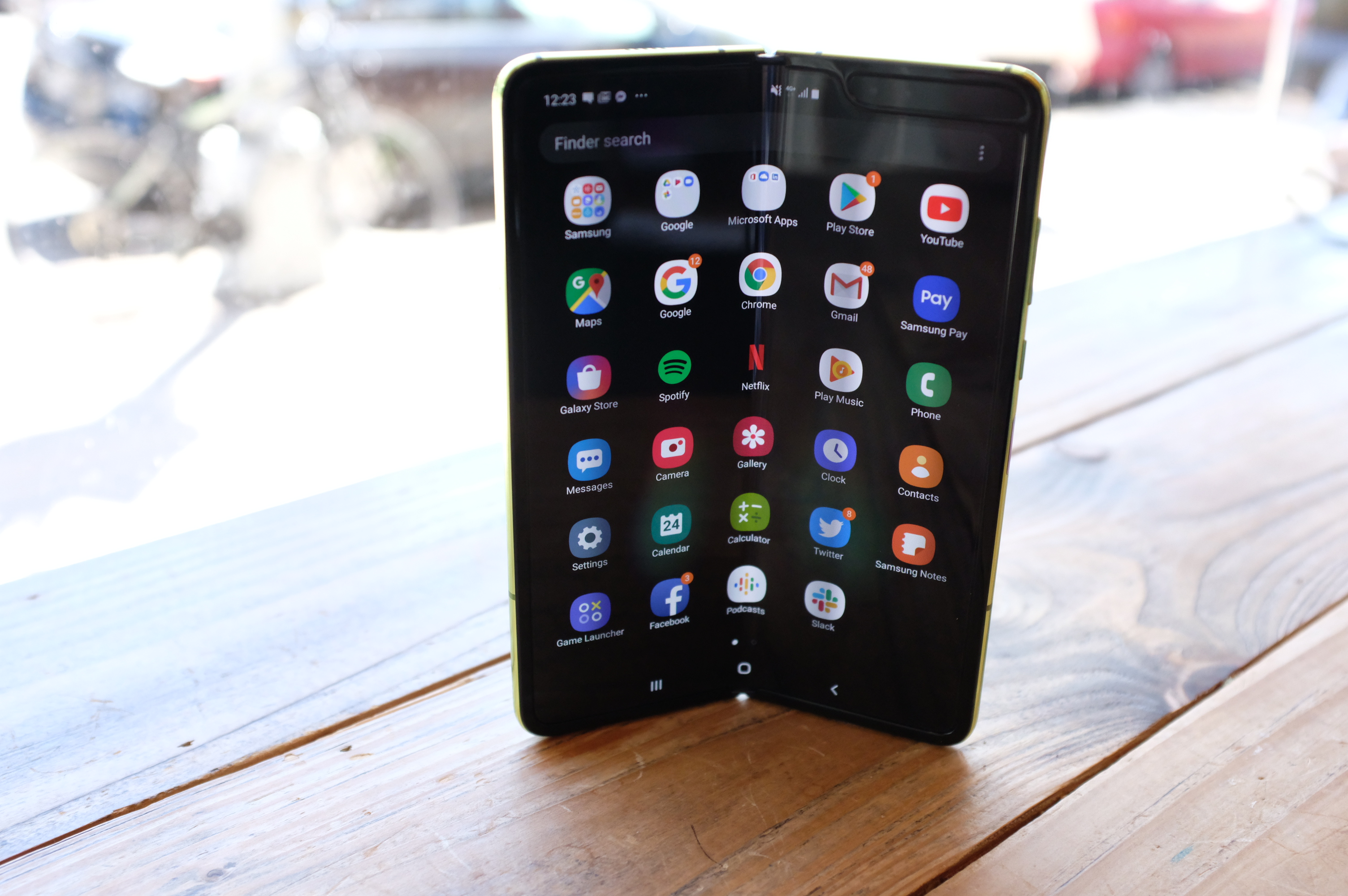
And the seam. I found myself uttering the phrase “it could be worse” a lot. Like so much of the general aesthetic (including the odd green-gold color of my Fold’s casing), it’s lighting-dependent. There are plenty of times when you don’t see it all, and other when the glare hits it and makes it look like a line right down the center.
I realized after snapping a couple of photos that it’s particularly apparent in many shots. That probably gives a false impression of its prominence. It sucks that there’s one at all, but it’s not a surprise, given the nature of the design. You mostly don’t notice it, until your finger swipes across it. And even then it’s subtle and totally not a dealbreaker, unlike, say, the massive gap that made the ZTE Axon M look like two phones pasted together.
I love the ability to stand the device up by having it open at a 90-degree angle, so I can watch videos while brushing my teeth. But this orientation blocks the bottom speakers, hampering the already iffy sound. Thankfully, your $1,980 will get you a pair of the excellent Galaxy Buds in box. It’s hard to imagine Apple bundling AirPods with the next iPhone, but I guess stranger things have happened, right?
Multi-Active Window is the other key software piece. It’s something that has been available on other Samsung devices and certainly makes sense here. Open an app, swipe left from the right side of the screen and a tray will open. From there, you can open up to three apps on the display. Once open, the windows feature a small tab at the top that lets you rearrange them.
It’s handy. I used it the most during those times I had a video playing on an exercise machine, so I didn’t have to close out of everything to check emails and Twitter. I’m a gym multi-tasker. I’m sorry, it’s just who I am now.
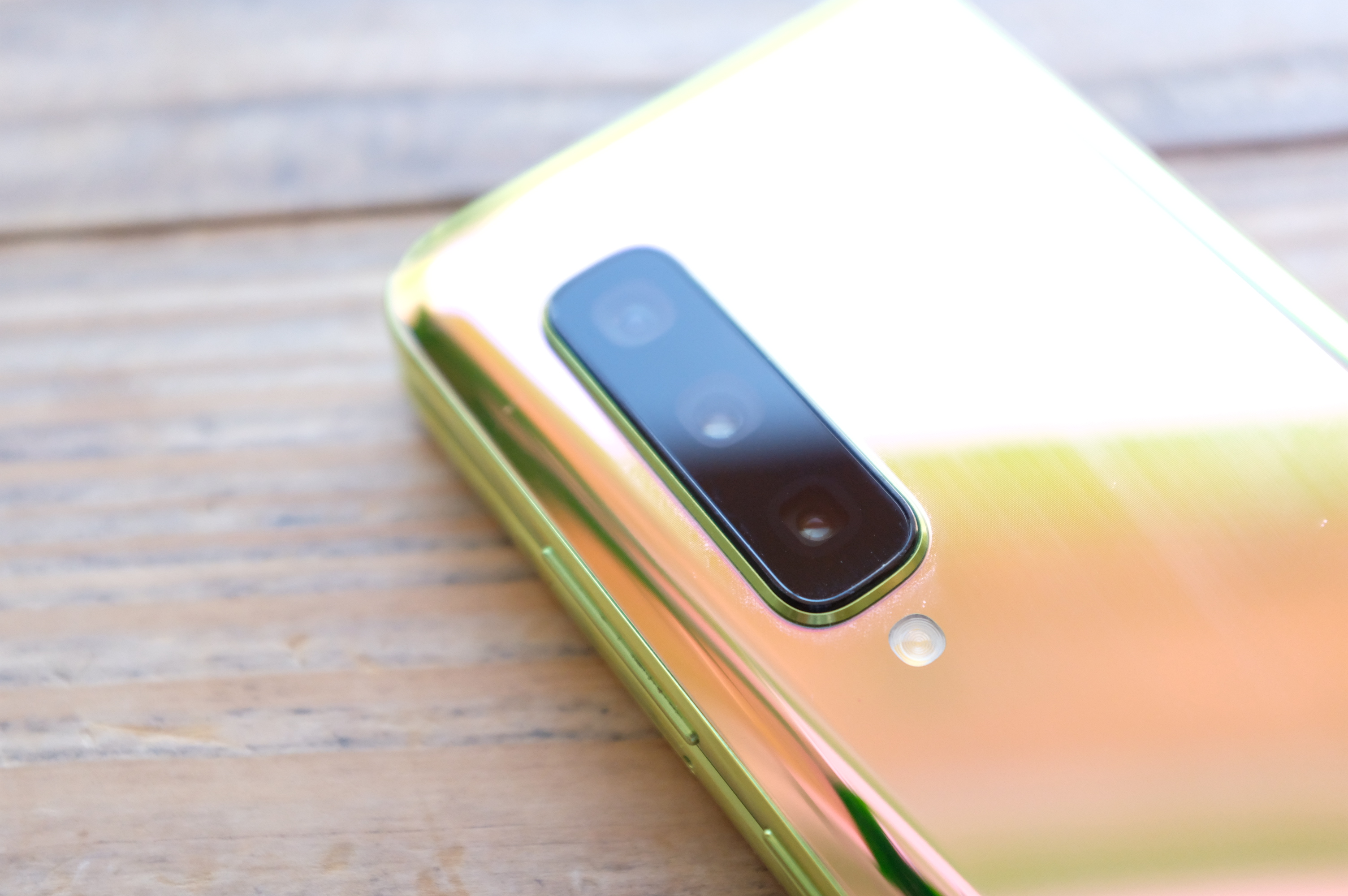
It worked quite well on the whole, courtesy of robust internals, including 12GB of RAM and a Snapdragon 855. The primary issue I ran into was how some of the apps maintained that half-screen format after I closed out and reopened. I’m sure some people will prefer that, and I’m honestly not sure what the ideal solution is there.
The Fold’s also got a beefy battery on board. Like Huawei’s, it’s split in two — one on either side of the fold. They work out to a beefy 4,380 mAh. That’s just slightly less than Huawei’s 4,500, but again, the Mate X is 5G by default — which means it’s going to burn through mAhs at a faster rate.
Ultimately, the Fold’s greatest strength is Samsung itself. I understand why you probably just did a double take there in the wake of the company’s latest hardware scandal, but the fact is that the company knows how to build phones. The Fold was very much built atop the foundation of the successful Galaxy line, even while it presents a curious little fork in the family tree.
That means a solid and well-thought-out user experience outside of the whole fold thing.
[gallery ids="1816871,1816872,1816873,1816874,1816875,1816876"]
That list includes great cameras with excellent software features and clever tricks like the new Wireless PowerShare, which lets you fold up the phone and charge up those Galaxy Buds or another phone while it’s plugged in. For better or worse, it also includes Bixby. Our model was a European version that didn’t have the full version, but I think I’ve made my thoughts on the smart assistant pretty well known over the last couple of years.
The devoted Bixby button is very much here. And yes, I very much accidentally pressed it a whole bunch. The headphone jack, on the other hand, is conspicuously absent, which is no doubt a big driver behind the decision to include Galaxy Buds. The Fold is an anomaly in a number of ways, but it’s hard to shake the feeling that this might finally represent the beginning of the end for the port on Samsung’s premium devices.
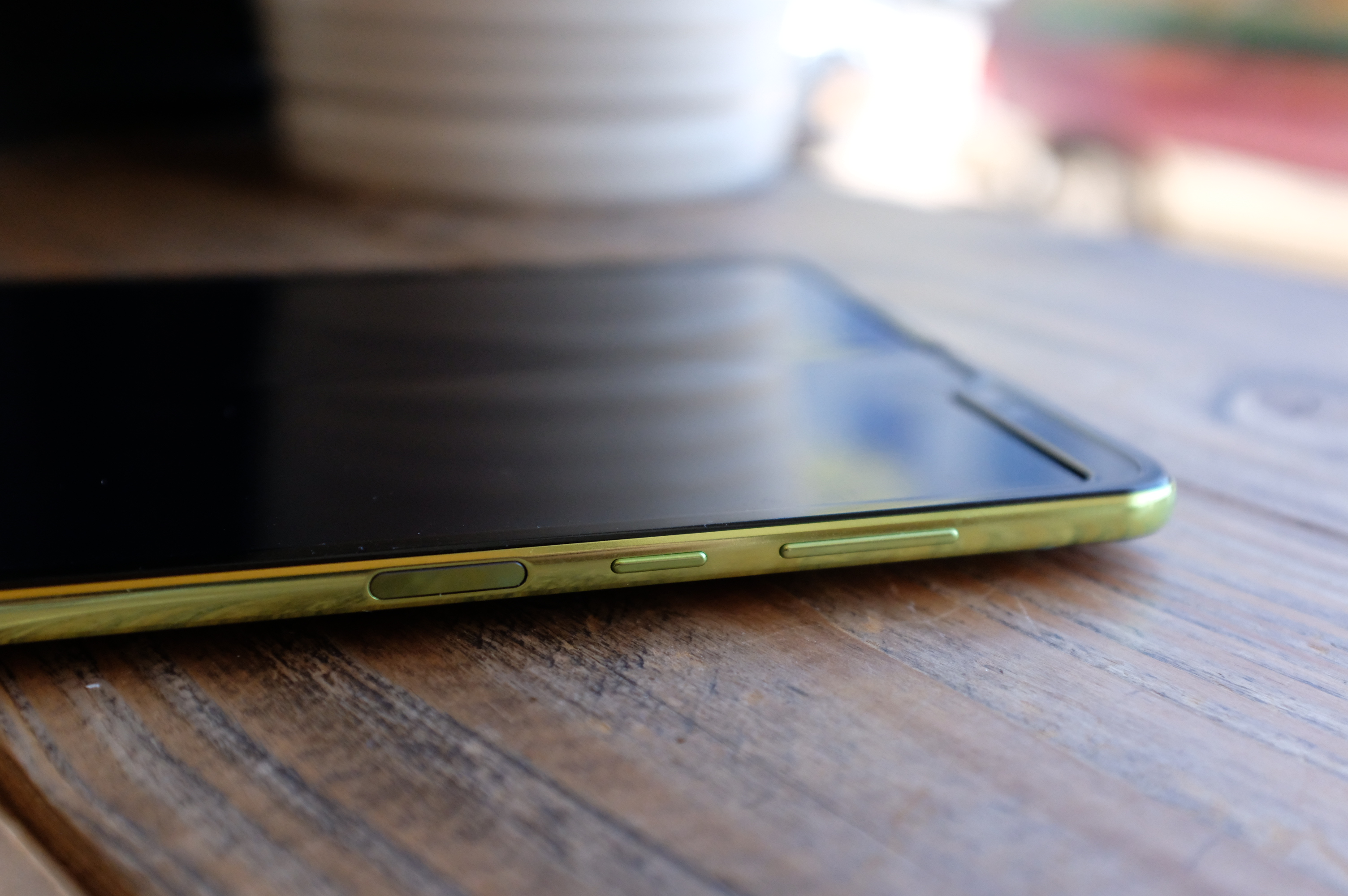
Also absent is the S Pen. The stylus began life on the Note line and has since branched out to other Samsung devices. I suspect the company would have had a tough time squeezing in space for it alongside the dual batteries, and maybe it’s saving something for future generations, but this does feel like the ideal screen size for that accessory.
I’m parting ways with the Fold this week, per Samsung’s instructions. Unlike other products, giving it up won’t feel that tough. There wasn’t a point in the past week when the Fold didn’t feel like overkill. There were, however, times when my iPhone XS screen felt downright tiny after switching back.
In many ways, the foldable phone still feels like the future, and the Fold feels like a stop along the way. There are a lot of first-gen issues that should be/should have been hammered out before mass producing this device. That said, there are certain aspects that can only really be figured out in real-world testing. Take the fact that Samsung subjected the device to 200,000 mechanical open and closes. That’s a lot, and probably more than the life of just about any of these devices, but people don’t open and close like machines. And when it comes to the screen, well, a little dirt is bound to get between the gears, both metaphorically and literally.
As I close this Galaxy Fold a final time, it seems safe to say that the device represents a potentially exciting future for a stagnant smartphone space. But that’s the thing about the future — it’s just not here yet.
from TechCrunch https://tcrn.ch/2vjfgOy
No comments:
Post a Comment